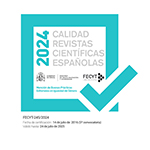Teaching and the environment: eco-literacy processes using the gear system
Abstract
While great strides have been made on the road to curricular environmental education, more needs to be done to explore how to include effective global education in our classrooms. Awareness is the engine of change towards the challenges we face, and the promotion of reflection, citizen engagement and a critical attitude towards our environment is the main weapon for transformation. The aim of the following article is twofold. Initially, after indicating the principles of environmental education, the role of language and the environment in different areas of education is detailed, such as in the Curriculum Plan of the Cervantes Institute, the laws regulating compulsory education and the Baccalaureate, the CLIL methodology and practical studies on environmental education in the foreign language classroom. Subsequently, a didactic unit consisting of 5 activities is presented through what we will call a system of gears, in order to demonstrate that each action has repercussions on the other elements of the chain within a cyclical process, and dedicated to university students of Spanish as a foreign language. The methodology will be the task-based approach and group work. The aim is to promote the transversality of environmental contents in language classes from a holistic, critical and plural point of view through a change of paradigm, and thus contribute to the development of environmental education of foreign students through a comprehensive practice of the Spanish language based on reflection and content analysis.
Downloads
Article download
License
In order to support the global exchange of knowledge, the journal Didáctica. Lengua y Literatura is allowing unrestricted access to its content as from its publication in this electronic edition, and as such it is an open-access journal. The originals published in this journal are the property of the Complutense University of Madrid and any reproduction thereof in full or in part must cite the source. All content is distributed under a Creative Commons Attribution 4.0 use and distribution licence (CC BY 4.0). This circumstance must be expressly stated in these terms where necessary. You can view the summary and the complete legal text of the licence.










